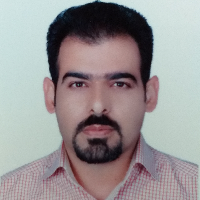Effectiveness of meta models of Gene Expression and Neural-Fuzzy Network Simulations in Hydrograph Modeling of Aquifer Representation
Author(s):
Article Type:
Research/Original Article (دارای رتبه معتبر)
Abstract:
Underground water mapping is an effective tool for managing and protecting these resources, in order to apply a proper management to long-term planning and to better utilize the potential of the water in the plains. In this study, the monthly statistical data of the surface of piezometers for 5 years blue (89-88 to 93-92) related to the 8-pisometer level of the Lower-Andimeshk plain aquifer. At the beginning, using the Tesine method, the weighted average of each piezometer was obtained and the time series of the groundwater level of the plain, which represents the hydrograph of the representative water column of the study area, was calculated. Then, by using the neuro-fuzzy simulator and meta-model of the gene expression simulator, the hydrograph represents the modeling aquifer and the results were compared. The results showed that the meta-model of gene expression simulator with a coefficient of explanation of 7390.0 at the test stage was better than the neuro-fuzzy simulator model with a coefficient of explanation of 0.6348.Underground water mapping is an effective tool for managing and protecting these resources, in order to apply a proper management to long-term planning and to better utilize the potential of the water in the plains. In this study, the monthly statistical data of the surface of piezometers for 5 years blue (89-88 to 93-92) related to the 8-pisometer level of the Lower-Andimeshk plain aquifer. At the beginning, using the Tesine method, the weighted average of each piezometer was obtained and the time series of the groundwater level of the plain, which represents the hydrograph of the representative water column of the study area, was calculated. Then, by using the neuro-fuzzy simulator and meta-model of the gene expression simulator, the hydrograph represents the modeling aquifer and the results were compared. The results showed that the meta-model of gene expression simulator with a coefficient of explanation of 7390.0 at the test stage was better than the neuro-fuzzy simulator model with a coefficient of explanation of 0.6348.Underground water mapping is an effective tool for managing and protecting these resources, in order to apply a proper management to long-term planning and to better utilize the potential of the water in the plains. In this study, the monthly statistical data of the surface of piezometers for 5 years blue (89-88 to 93-92) related to the 8-pisometer level of the Lower-Andimeshk plain aquifer. At the beginning, using the Tesine method, the weighted average of each piezometer was obtained and the time series of the groundwater level of the plain, which represents the hydrograph of the representative water column of the study area, was calculated. Then, by using the neuro-fuzzy simulator and meta-model of the gene expression simulator, the hydrograph represents the modeling aquifer and the results were compared.
Keywords:
Language:
Persian
Published:
Water and Soil Conservation, Volume:25 Issue: 4, 2018
Pages:
49 to 69
https://www.magiran.com/p1929486
سامانه نویسندگان
مقالات دیگری از این نویسنده (گان)
-
Evaluating the quality of Shiraz wastewater treatment plant effluent for agricultural uses in drought conditions utilizing IRWQI, NSFWQI, and OWQI indicators
Hanie Ghaedi, *
Journal of Drought and Climate change Research, -
Qualitative assessment of Shiraz wastewater treatment plant effluent for different purposes
Amir Bahrami *, Fatemeh Ahadi, , Fateme Aghamir
Environmental Sciences, -
Investigation of the performance of the Modflow concept model and the Simulator Meta model of Genetic Programming in the modeling of the hydrograph representing the aquifer (Case Study: Lour-Andimeshk Plain)
Massume Zeinali, MohammadReza Golabi *, Arash Azari, Sohila Ferzi
Journal of Auifer and Qanat, -
Comparison of Artificial Intelligence Algorithms in Daily River Flow Modeling
Massome Zeinali, Sohila Farzi, MohammadReza Golabi *, Feridon Radmanesh
Journal of water engineering,


